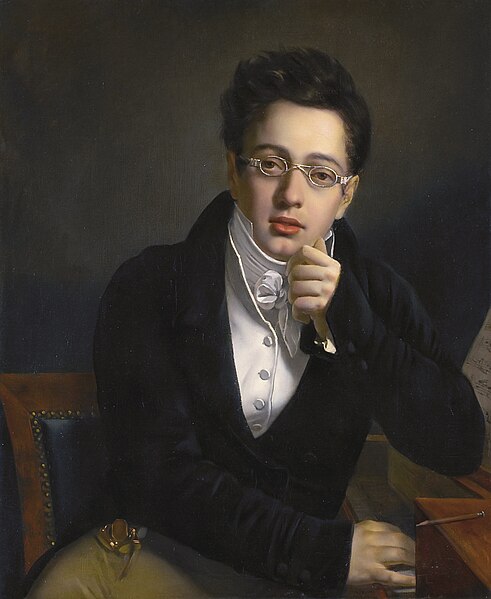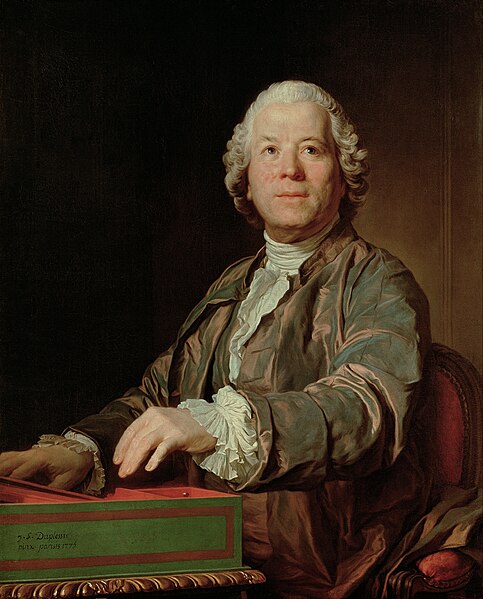Franz Peter Schubert was an Austrian composer of the late Classical and early Romantic eras. Despite his short life, Schubert left behind a vast oeuvre, including more than 600 secular vocal works, seven complete symphonies, sacred music, operas, incidental music, and a large body of piano and chamber music. His major works include the art songs "Erlkönig", "Gretchen am Spinnrade", "Ave Maria"; the Trout Quintet, the unfinished Symphony No. 8 in B minor, the "Great" Symphony No. 9 in C major, the String Quartet No. 14 Death and the Maiden, a String Quintet, the two sets of Impromptus for solo piano, the three last piano sonatas, the Fantasia in F minor for piano four hands, the opera Fierrabras, the incidental music to the play Rosamunde, and the song cycles Die schöne Müllerin, Winterreise and Schwanengesang.
The house in which Schubert was born, today Nußdorfer Straße 54
Possible portrait of the young Franz Schubert c. 1814, attributed to Josef Abel
Caricature of Johann Michael Vogl and Franz Schubert by Franz von Schober (1825)
Watercolour of Franz Schubert by Wilhelm August Rieder (1825).
The Classical Period was an era of classical music between roughly 1750 and 1820.
A young Wolfgang Amadeus Mozart, a representative composer of the Classical period, seated at a keyboard.
A modern string quartet. In the 2000s, string quartets from the Classical era are the core of the chamber music literature. From left to right: violin 1, violin 2, cello, viola
Gluck, detail of a portrait by Joseph Duplessis, dated 1775 (Kunsthistorisches Museum, Vienna)
Haydn portrait by Thomas Hardy, 1792








